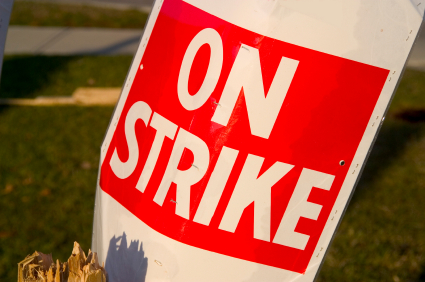Would I Have to Strike?
Bargaining Chip or Billy Club?
Why Do Unions Strike?
When a contract comes back from the negotiating table, employees are sometimes given only two options by the union:
-
- Accept the contract in whatever form negotiated by the union, or
- Reject the contract and vote to strike
If the union votes to strike, the union forces the employees to stop working, hoping to pressure the company into agreement.
But here’s what often goes unspoken:
When a union begins to negotiate with a company, the only bargaining chips it brings to the table are the threat of strike, and the current pay and benefits of the workforce.
- Sometimes a union uses a strike as a hammer against its members to pressure the employees to accept a contract that contains everything the union wanted, but very little of what the employees were told they could expect.
Often, a union member’s only option is to support a contract he or she doesn’t like in order to avoid having to go out on strike.

What does the union really use the strike threat for?
This is the average number of days a striking employee was on the picket line or off the job in 2024.
What happens to you while on strike?
You get no pay or benefits from the company and if you are on strike over contract financial demands – what is known as an economic strike – you can be permanently replaced. Sure the union has bargaining chips when they come to the table. The problem is if they must use them, you are on a picket line while union officials continue to get their pay and benefits. What does the union offer you to walk away from a paycheck and all of your health benefits? The typical union strike fund authorizes a fraction of your normal pay, only after you’ve been on strike for 2 weeks (assuming they have the money in the strike fund to make the payments). You need to be aware of that risk in a unionized environment.
